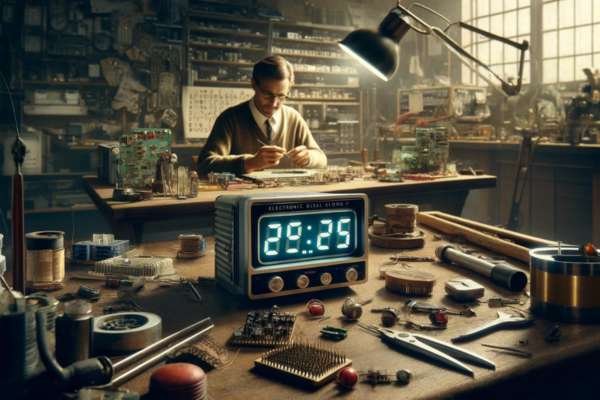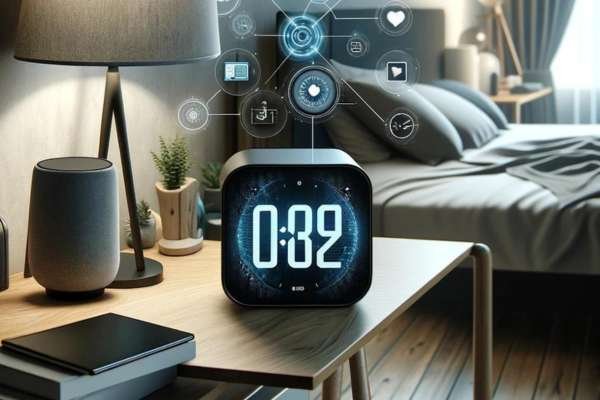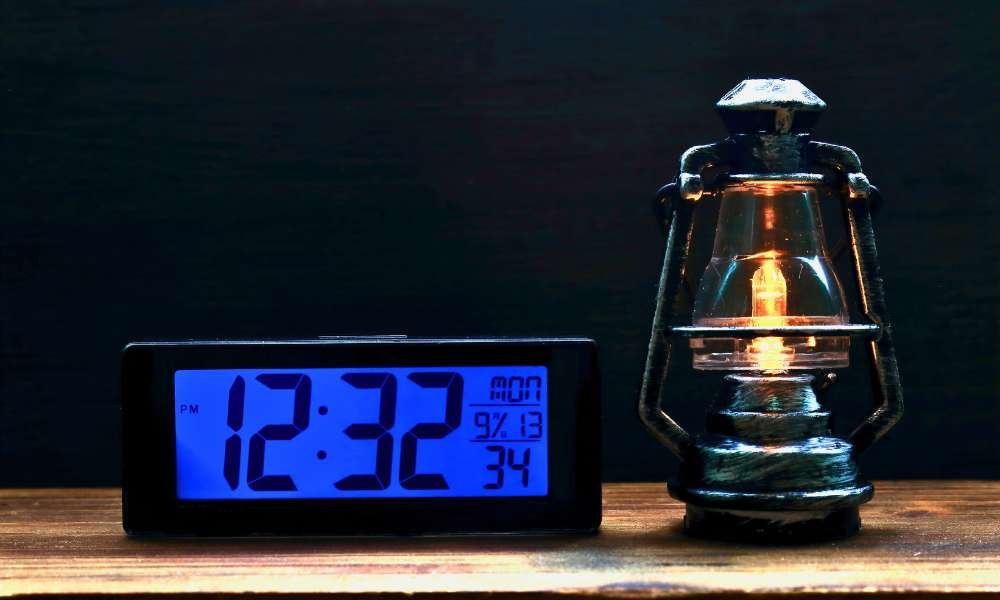Curious about the origins of digital clocks? Discover the fascinating history behind this ubiquitous timekeeping technology in our article, “When Did Digital Clocks Come Out?” Digital clocks revolutionized the way we perceive and manage time, offering precision and ease of use that traditional analog clocks couldn’t match. In this comprehensive exploration, we’ll delve into the key milestones that led to the development and popularization of digital clocks, tracing their evolution from early prototypes to the sleek, modern designs we rely on today. Join us as we uncover the story behind the digital clock’s debut and its lasting impact on our daily lives.
When Did Digital Clocks Come Out? | Comprehensive History & Evolution
- Early Prototypes: Initial digital clock concepts in the early 20th century.
- First Digital Clock: Introduction and inventors of the first digital clock.
- Technological Breakthroughs: Advancements in electronics and LED displays.
- Commercial Availability: market debut and public reception of digital clocks.
- Widespread Adoption: Factors Leading to Digital Clocks’ Popularity.
- Modern Features: Innovations like smart technology and connectivity.
- Timekeeping Transformation: Impact on daily time management and perception.
Early Concepts and Developments
Digital timekeeping’s genesis predates the sleek electronic era, harking back to early mechanical innovations. The foundational concepts of smart clocks, incorporating devices like punch cards and mechanical digits, were pivotal in shaping initial designs. These mechanisms employed discrete values to represent time, laying the groundwork for more sophisticated systems. Among the key inventors, Joseph Marie Jacquard stands out for his 1801 invention of the Jacquard loom, which used punch cards to control weaving patterns—a technique that indirectly inspired the development of programmable machines. These early advancements signified a crucial shift from analog to digital methods of timekeeping, setting the stage for the electronic revolution in clocks.
The Birth of Electronic Digital Clocks

The first electronic digital clocks invented, a significant innovation in timekeeping, emerged in the 1960s, marking a pivotal shift from mechanical to smart technology. These devices harnessed the power of transistors and light-emitting diodes (LEDs) to display time digitally, a method that was both revolutionary and more reliable than previous mechanisms. The use of transistors allowed for smaller, more energy-efficient watches, while LEDs provided clear, readable displays. This technological leap facilitated the commercial availability of digital clocks, making accurate timekeeping accessible to a broader public. The introduction of these watches not only revolutionized how we measure and perceive time but also set the stage for further advancements in modern technology.
Technological Components Explained
Digital clocks, pivotal in our daily lives, function through a few core components: an LED or LCD display, a circuit board, and a power source. The display shows the time in a digital format, using either light-emitting diodes (LEDs) or liquid crystal displays (LCDs). The circuit board, the brain behind the operation, processes the timekeeping data, while the power source fuels the clock’s functionality. Central to their accuracy is the quartz crystal, which oscillates at a stable frequency when subjected to an electric charge. This oscillation helps the clock measure time precisely, ensuring reliability in displaying the correct time. These technological innovations collectively define the modern digital clock.
Advancements in the 1970s and 1980s
The 1970s and 1980s marked significant advancements in the evolution of digital clocks, showcasing their seamless integration into daily life. During this era, smart watches were incorporated into a variety of everyday appliances and electronics, enhancing convenience and functionality in homes and workplaces. This period also witnessed the surge in popularity of digital wristwatches, revolutionizing personal timekeeping with their compact, portable designs. Moreover, these decades brought about key innovations like alarm functions, snooze features, and the integration of radio clocks, which further enriched the utility and appeal of smart clocks. These enhancements not only made time management more accessible but also transformed how people interacted with their devices, setting a new standard in the timekeeping technology landscape.
Cultural Impact
Digital clocks revolutionized our perception and utilization of time, embedding efficiency into daily life and various industries. Their precise, easy-to-read displays became crucial in sectors like transportation, where accurate timing ensures the smooth coordination of schedules and safety protocols. In broadcasting and computing, digital clocks facilitated tighter programming and operational precision, enhancing productivity. Beyond functional impacts, these devices also permeated popular culture and media, symbolizing modernity and technological advancement. Their appearance in films, TV shows, and other media underscored a societal shift towards embracing modern technology, reflecting a profound transformation in how time is interacted with and represented.
Global Spread and Adoption
Digital clocks gained global popularity due to their precision and ease of use, leading to widespread manufacturing and adoption across continents. Major brands like Casio, Philips, and Sony pioneered incorporating modern technology into consumer watches during the late 20th century. These manufacturers dominated the market by constantly innovating and integrating digital watches into various devices, including televisions, radios, and household appliances. This expansion facilitated the global spread of digital clocks, making them a common feature in homes and businesses worldwide. The universal presence of smart watches today showcases their enduring appeal and the successful penetration of this technology in the global market.
Challenges and Controversies
Digital clocks have revolutionized timekeeping, yet they are not without challenges and controversies. A significant debate centers around their use in education; proponents argue smart watches support modern learning, while critics claim they hinder cognitive development compared to analog clocks. Additionally, digital clocks face technical issues such as reliability concerns, electromagnetic interference that can affect other devices, and higher power consumption compared to their analog counterparts. These challenges pose questions about the balance between technological advancement and traditional skills retention, as well as the implications for sustainable design in digital timekeeping devices.
Modern Innovations and Smart Integration

Digital clocks have seamlessly integrated with modern smart technology, enhancing functionality through features like internet connectivity and synchronization. This fusion is evident in everyday devices such as smartphones and smart home systems, where smart watches offer not only timekeeping but also control over schedules and home automation. Looking forward, the evolution of timekeeping technology promises even greater integration, potentially involving more sophisticated IoT applications that could lead to personalized time management solutions based on user behavior and preferences. As digital clocks continue to adapt and evolve, they remain at the forefront of technological innovation, promising exciting developments for the future of connected devices.
FAQs on When Did Digital Clocks Come Out?
1. When was the first digital clock invented?
✅ In the early 20th century, significant advancements occurred in the 1920s and 1930s.
2. Who invented the first digital clock?
✅ Warren Marrison, 1927, with the first quartz clock.
3. When did digital clocks become commercially available?
✅In the 1970s, with advancements in LED and LCD technology .
4. What made digital clocks possible?
✅Quartz crystal oscillators, LED displays, and microprocessors.
5. How have digital clocks evolved?
✅Features now include smart connectivity, voice control, and smart home integration.
Conclusion
In conclusion, the question “When Did Digital Clocks Come Out?” takes us on a journey through the fascinating evolution of timekeeping technology. From their early conceptual stages in the early 20th century to becoming household staples in the 1970s, digital clocks have revolutionized the way we track time. The advancements in quartz crystal technology, LED, and LCD displays have made digital watches more accurate and accessible. As they continue to evolve with smart features and connectivity, digital watches remain an essential part of our daily lives, reflecting both innovation and practicality in timekeeping.
